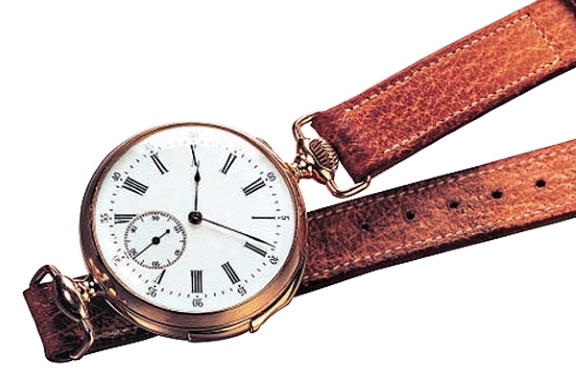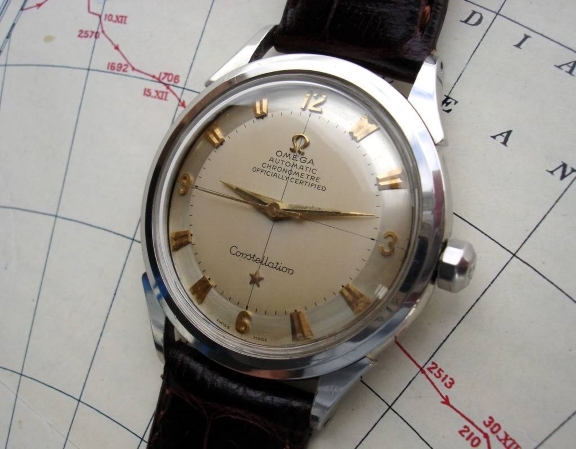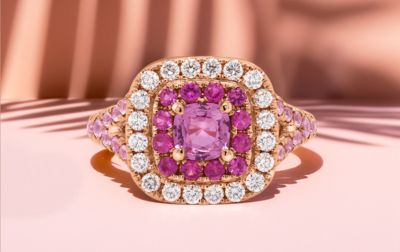History of Omega Watches
Since its beginning in 1848, the history of OMEGA Watches has been full of very interesting watches, even essential to the history of watchmaking. Along with the Omega Speedmaster and the Omega Seamaster, many other watches have been milestones for OMEGA. Iconic models, great technical innovations, such as the coaxial escapement or the first completely antimagnetic movement manufactured. Omega is clearly one of the leading brands in the watch industry. We review seven watches that have made the history of OMEGA Watches.
FIRST MINUTE-REPEATER WRISTWATCH (1892)
The world's first one-minute repeater wristwatch was introduced in September 1892 by the Bienne, Switzerland firm of Louis Brandt & Frère, precursor of the Omega watch company. Brandt chose Audemars Piguet at Le Brassus to modify a 13-ligne Lépine ébauche that Audemars had purchased from ebauche manufacturer LeCoultre & Cie.
The striking mechanism was activated by a slide at 3 o'clock. The complex wristwatch closely resembles that of a pocket watch. Etched on the dust cover is a French phrase that translates as "Excluded from the competition: jury, Paris 1889." The engraving suggests that the watch had been exhibited at the Chicago World's Fair in 1893, but had not been allowed to participate in the medal competition because César Brandt, who ran the company with his brother Louis-Paul, had been part of the jury of the Paris World's Fair in 1889.

THE FIRST OMEGA WRISTWATCH (1900)
The first wristwatches bearing the Omega name were produced in 1900 and used by British officers in the South African Boer War (1899-1903). Omega was one of the first companies to begin mass production of wristwatches. The watches withstood the harsh treatment they received. An advertisement for Omega in a watchmakers' magazine in Leipzig in 1904 publicized the testimony of a British artillery officer whose Omega wristwatch performed admirably in bitter cold, scorching heat, torrential rain, and merciless sandstorms. The lieutenant colonel concluded that "the wristwatch is an essential element of the campaign." The wristwatches were equipped with a Lépine Caliber HN B 12-ligne and were available in two versions: one with the crown on the right, for use on the left wrist and the other with the crown on the left for use on the wrist. right wrist.

OMEGA SEAMASTER (1948)
René Bannwart is considered the father of Omega Seamaster. The man who would later find Corum began building Omega's design department in 1940, at which time sketches for new models were often drawn by draftsmen in watch factories. Bannwart's decision set Omega on a new path that other brands would soon follow.
To celebrate Omega's centenary, Omega sales director Adolphe Vallat asked Bannwart to develop a sporty, robust and waterproof wristwatch. Bannwart felt that Vallat did not give him enough time, so he submitted one of the case designs to him with the comment "too clumsy". To Bannwart's surprise, Vallat was delighted.
The result was the Seamaster family, the Omega Seamaster has its origins in watches supplied to the British Royal Air Force during World War II, the 1948 civilian version of the The pilots had a water-resistant case (up to 50 meters), a screwed caseback with lead joints, reinforced crystal, silver dial and polished and riveted Arabic numerals. The small seconds version, which was also available as a certified chronometer, contained the new automatic Caliber 28.10 RA RG-343. The model with a central seconds hand was the 28.10 RA SC-350.
The Omega Seamaster is undoubtedly one of Omega's most important watches: from classic 1970s chronographs to modern diving tools and vintage-inspired reissues, it brought all the innovations to a single product line and therefore essential to understanding the history of manufacturing in Bienne.

OMEGA CONSTELLATION (1952)
Omega began using the name "Constellation" in 1952 to denote its officially certified wrist chronometers. The first model was powered by the Caliber 28.10 RA SC PC RG AM (nicknamed the "352"), which first appeared in 1945. This caliber is wound via a hammer-type unidirectional winding weight. It also featured an indirectly powered central seconds hand. The 28.1 mm diameter and 5.4 mm thick movement passed the official chronometer tests with flying colors. Its robustness, reliability and precision led Omega to produce the Constellation in large quantities. This model was also Omega's first mass-produced watch chronometer.

OMEGA SPEEDMASTER (1957)
The Omega Speedmaster, destined to become the world's most famous chronograph due to its use by NASA for the Apollo program, was introduced in 1957. But the Speedmaster story really begins in 1943 with the Caliber 27 CHRO C12 chronograph, developed by Jacques Reymond. Born into a family of long-established watchmakers, Reymond had joined the Omega Lemania subsidiary in 1942. The "CHRO" in the caliber designation stood for "chronograph", the "27" referred to the diameter of the movement in millimeters and "C12" denoted the additional counter for 12 elapsed hours.
Later developed by Albert Piguet in 1946 and named by Omega with the abbreviated name "321", this movement was the smallest of its kind at the time. Credit for the design of the Speedmaster case belonged to a group from Lemania, including designer Claude Baillod, prototype maker Georges Hartmann, and machinist Désiré Faivre.

The watch's standout features were a black dial, luminous hands, a tachymeter scale, water-resistant case, a screw-down caseback, and a domed plexiglass crystal. The diameter was originally 39 mm. A 40 mm version with the tachymeter scale on a black background along the flange appeared in 1960.

The 'Speedy' remains an important watch in the Omega collection and modern editions, such as the Speedmaster Mark II or the classic Moonwatch professional, continue to draw on this legendary past.




OMEGA DE VILLE (1967)
Omega launched De Ville as a separate line in 1967, it had been a collection within the Seamaster line since 1960. Simpler, younger, more colorful and more varied than Seamaster, it quickly became Omega's best-selling collection. The name represented a whole philosophy because the De Ville was not created at Omega's headquarters in industrial Bienne, but in sophisticated Geneva. The collection was meant to represent a new urban elegance. Designers had searched and found a modernist element in wristwatch design.

The collection included rectangular models containing the ultra-thin hand-wound caliber 620. The synthesis of modernity and timelessness turned out to be the right one.

Omega De Ville wristwatches won six "Golden Roses" at the Baden-Baden Design Awards in the 1970s, as well as the coveted Grand Prix Triumph of European Excellence. Deville's modern editions share this same spirit of elegance and timeless design, such as the Omega DeVille Hour Vision.

PRIMER ESCAPE COAXIAL (1999) – Omega De Ville Coaxial
The Omega De Ville Co-Axial contained the automatic caliber 2500, the first wrist chronometer with a coaxial escapement. The escapement was invented by the English master watchmaker George Daniels. Omega developed Daniels' design so it could be manufactured in large quantities. Caliber 2500 was a modified, automatic movement from Omega Group's sister, ETA.

The coaxial escapement was a great help in solving two fundamental problems that had plagued long-term precision timekeeping, first, every change in lubricating oil viscosity detracts from value to the regularity of the behavior of the rate, secondly, over time, oil gradually disappeared from the places where it was most needed in the movement.
Daniels revised the architecture of the driving elements to reduce both friction and the influence that the viscosity of the lubricant exerted on the amplitude of the balance. Unlike conventional escapements, its coaxial escapement consists of an intermediate wheel, a coaxial wheel and a lever with three paddle jewels. The lever acts only when the scale turns to the left. To fully exploit the advantages of this escapement, the 27-jewel caliber 2700 has a Glucydur balance with a frequency of 28,800 vph and a smooth, oscillating hairspring. The movement debuted in a simple round case for which Omega revived the "De Ville" name.
Visit the OMEGA Watches section of our website: https://www.pedroluisolivaresjoyero.com/en/omega




